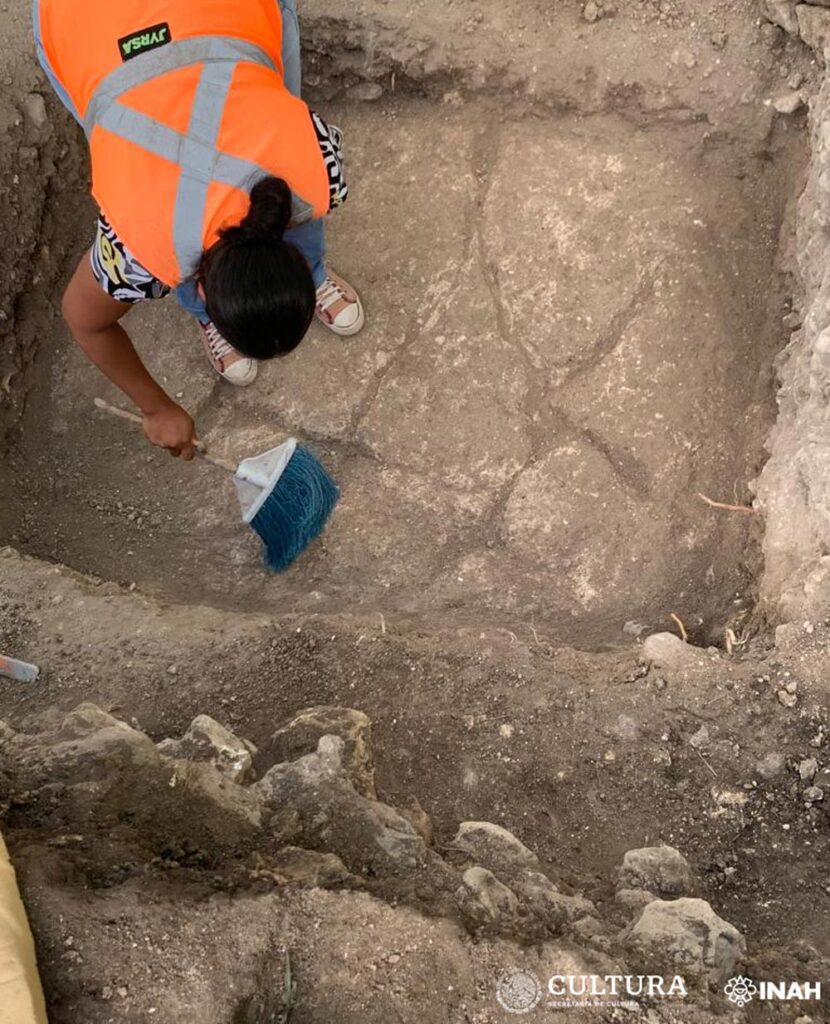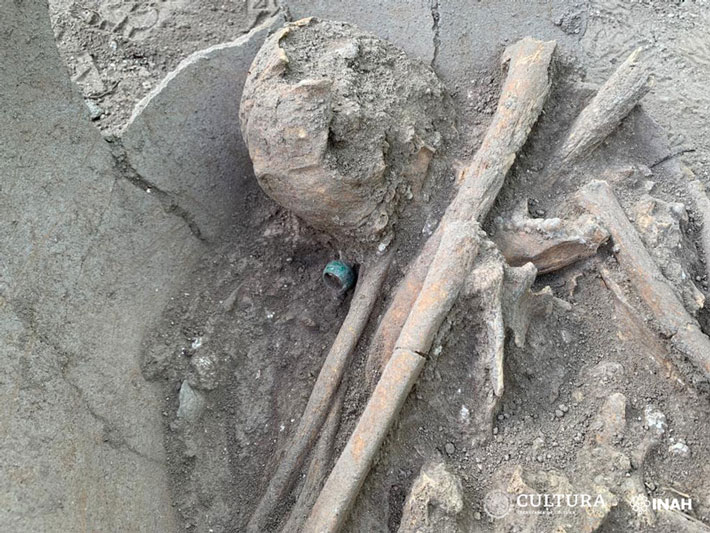Human Remains and Jade Ring Found at Maya Site in Mexico
Within the priority project of the Mayan Train, the application of the Program for the Improvement of Archaeological Zones (Promeza), by the Ministry of Culture of the Government of Mexico, through the National Institute of Anthropology and History (INAH), allows research and conservation of pre-Columbian monuments from the sites of Palenque, Moral-Reforma and El Tigre, located in Chiapas, Tabasco and Campeche, respectively. In the latter, the discovery of a human skeleton carrying a jade ring, whose antiquity is estimated at around 1,200 years, was recorded.

When participating in the morning conference of the President of Mexico, Andrés Manuel López Obrador, the general director of the INAH, Diego Prieto Hernández, reported on this discovery and on the application of Promeza in these heritage sites, “which allows the reconfiguration of the present to from the recovery and disclosure of the past”.
The skeleton, he explained, was discovered as part of a funerary offering, which was located inside platform 1E, to the west of the monumental complex known as Structure 1 of the El Tigre Archaeological Zone.
The ritual deposit consisted of two large-format vessels covered with ceramic bowls, as lids.
One of them particularly drew the attention of archaeologists, because it contained the skeletal remains of a young individual, placed in a flexed position and accompanied by a showy and well-preserved jade ring as a distinctive element.
Based on the characteristics of the vessels, the deposit can be associated to the Late Classic period (AD 600-800), coinciding with the population and political heyday of El Tigre.
Prieto Hernández indicated that the investigation will continue in the laboratory, where a micro-excavation will be carried out, in order to specify anthropophysical data and find out if it had other associated elements, such as seeds or smaller-format ornaments.
With this skeleton, noted the head of the INAH, there are 177 pre-Hispanic human burials located in Section 1 of the Mayan Train, through two aspects: during the monitoring of archaeological rescues in the laying of the railways, and the application of the Promise in the three mentioned areas.
As of August 14, 2023, he said, 2,698 real estate have also been preserved; 248 furniture elements; 281,353 ceramic fragments and 55 natural features associated with the presence of ancient human groups in this branch of the train, which runs from Palenque, in Chiapas, to Escárcega, in Campeche.
With regard to the Archaeological Zone of Palenque, in Chiapas, the anthropologist explained that through the Promeza the attention of the Temple of the Foliated Cross, the mortuary chamber of the Temple of the Inscriptions, houses A and D of the Palace and the buildings J1 and J5 of Group IV.
The new signage for the site, he added, is in the printing phase; the reconfiguration of the “Alberto Ruz L’huillier” Site Museum reports 30% progress, and the construction of the Visitor Service Center (Catvi) has 99% progress.
In the Moral-Reforma Archaeological Zone, in Tabasco, where a Catvi is also being built and signage is being renewed, the Promeza adds 43% progress in the investigation of Plaza Oriente, as well as in excavations and consolidations of various housing units.
Finally, in the El Tigre Archaeological Zone, in Campeche, progress is being made in the exploration of the aforementioned Structure 1, and in the investigation and conservation of the Market Square and the Main Square, while the so-called Triadic Complex is being prepared. for its opening to national and international tourism.
In this patrimonial site, the general director of INAH concluded, a Catvi is also being built, with 5% progress, and signage and visitor infrastructure are optimized.
